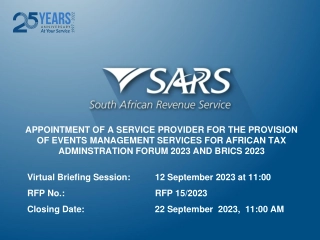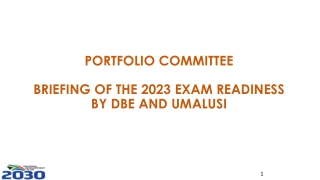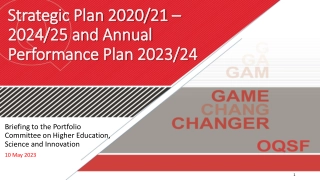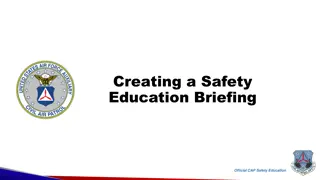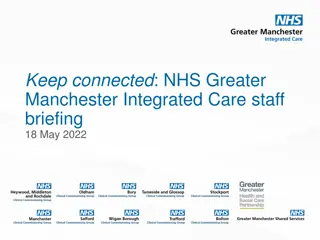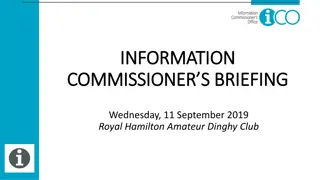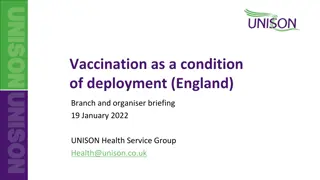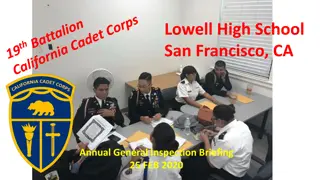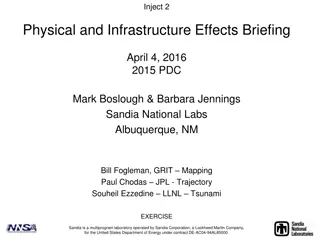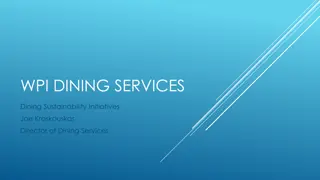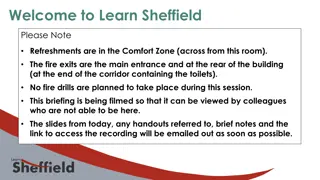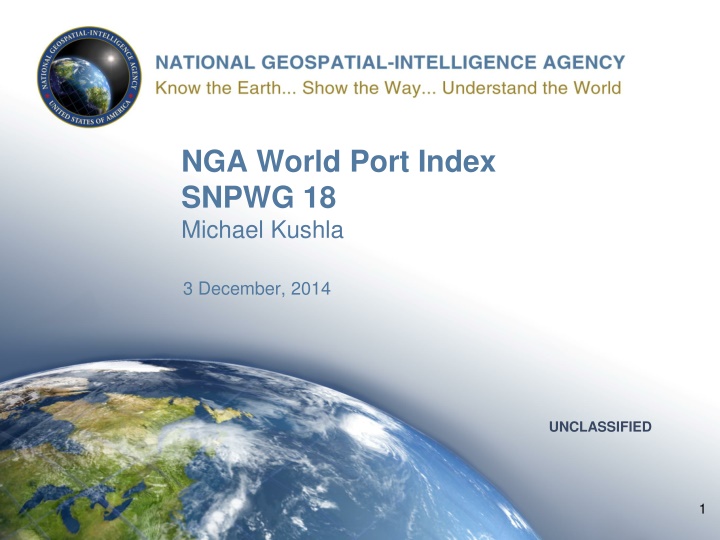
World Port Index Overview: Locations, Services, and Facilities
Explore the World Port Index (WPI) providing in-depth information on over 3,700 ports, shipping facilities, and oil terminals worldwide. Find out about the WPI display format, access options, search capabilities, and the challenges faced with PDF documents. Discover how the WPI offers valuable data for maritime safety and navigation.
Download Presentation

Please find below an Image/Link to download the presentation.
The content on the website is provided AS IS for your information and personal use only. It may not be sold, licensed, or shared on other websites without obtaining consent from the author. If you encounter any issues during the download, it is possible that the publisher has removed the file from their server.
You are allowed to download the files provided on this website for personal or commercial use, subject to the condition that they are used lawfully. All files are the property of their respective owners.
The content on the website is provided AS IS for your information and personal use only. It may not be sold, licensed, or shared on other websites without obtaining consent from the author.
E N D
Presentation Transcript
UNCLASSIFIED NGA World Port Index SNPWG 18 Michael Kushla 3 December, 2014 UNCLASSIFIED 1 1
UNCLASSIFIED UNCLASSIFIED 2 2 UNCLASSIFIED
UNCLASSIFIED UNCLASSIFIED Purpose of the World Port Index (WPI) The World Port Index provides the location, characteristics, known facilities, and available services of a great many ports and shipping facilities and oil terminals throughout the world. The selection of these places is based on criteria established by NGA and are not random choices. Contains information on 3,700 ports, shipping facilities, and oil terminals. Location, characteristics, known facilities, and available services. Ports with a depth of at least 4 meters are listed. 3 3 UNCLASSIFIED
UNCLASSIFIED UNCLASSIFIED WPI Display Format Tabular format. 31 information categories. 71 columns of information. Information displayed in the following manner: 1. Y for Yes. 2. N for No. 3. Blank for No Information. 4. Code Key letters to describe depths, harbor size, harbor types, shelter afforded, vessel length parameters, repairs available, and size of dry docks and marine railways. 4 4 UNCLASSIFIED
UNCLASSIFIED Difficulties using PDF Document Difficult to line up proper column and row. Cannot easily line up proper column and row. Column heading difficult to read. Must correlate letter codes for depths, vessel size, harbor types, shelter afforded, and repairs with Code Keys at top of page. Due to size restrictions of the PDF, adding a new information column requires the elimination of a current column. Search function almost non-existent. 6
UNCLASSIFIED UNCLASSIFIED WPI Access and Availability The WPI can be downloaded from the NGA Maritime Safety web site in the following formats: 1. Adobe PDF document file. 2. Windows executable files (automatically installs Adobe PDF document file). 3. Microsoft Access data base. 4. Shape file. 7 7 UNCLASSIFIED
UNCLASSIFIED UNCLASSIFIED On-line WPI Search Capabilities Specific World Port Index entries can accessed only by the following choices: 1. By a specific World Port Index Number. 2. By a range of World Port Index Numbers. 3. By country. 8 8 UNCLASSIFIED
UNCLASSIFIED On-line Search Results 1. Easier to read than the PDF document. Still need to use Code Keys to explain information. Same limitations on adding new information as the PDF document. No search capability beyond WPI number, range of WPI numbers, or country. 2. 3. 4. 9
UNCLASSIFIED Access Search Results 1. Easier to read than the PDF document. Still need to use Code Keys to explain information. Same limitations on adding new information as the PDF document. No search capability beyond port name, country, or region. 2. 3. 4. 10
UNCLASSIFIED Shape File 1. Shows location of each port. 2. Click on locations to display port data (similar to Access view). 3. Still need to use Code Keys to explain information. 4. Users need to be familiar with GIS software and its functionality to make use of the information. 5. No other search capability. 11
UNCLASSIFIED What Are We Looking At Improving? Information in a data base structure. Output options in XML, HTML, PDF, and Shapefiles. More robust search options. Visual display of information. User experience. 12
UNCLASSIFIED Information What should stay? What can be removed? What needs to be added? 13
UNCLASSIFIED Information Use of SNPWG Feature Dictionary with its associated attributes and definitions: Category of Marine Services (Vessel Traffic Service, Port Service, Ship Reporting Service, Broadcast Service) Port parameters (Maximum vessel draft and beam. Maximum/minimum vessel loa, displacement tons, dwt, gt, and nt.) Pilotage Pilot Qualification Category of Harbor Facility Mooring Facilities Berthing Facilities (Total berths, visitors berths, berthing lengths) Overhead Limits Anchoring (holding quality) Communications (Radio channels, telephone, facsimile, telex, telegraph, internet) Category of Supplies Repair Services Remote Pilotage 14
UNCLASSIFIED More Robust Search Options General WPI Number, port name, harbor type, harbor size, etc. Geographic Position, bounding rectangle, ocean basin, country, etc. Vessel parameters Type, size, loa, draft, beam, air draft, etc. Port/pier/facilities parameters Type of facilities, limitations based on vessel parameters, etc. Port services Medical facilities, water, bunkers, SSC/SSEC, etc. Port restrictions Depths, vertical clearance, night transit, ice, underkeel requirements, etc. 15
UNCLASSIFIED Sample Display Better visual display of the information. Better explanation of topics. Elimination of Y, N, letter codes, and Code Keys. 16
UNCLASSIFIED End Result Expanded information available. More robust search options. Better visual display of information. Improved data input process. Improved user experience. 17
UNCLASSIFIED Questions? Comments? Suggestions? Insight? 18
UNCLASSIFIED UNCLASSIFIED 19 19 UNCLASSIFIED


